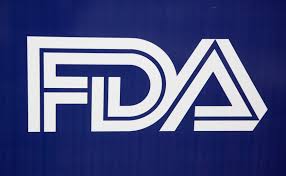
Video Link: https://vimeo.com/289146886
Video Download: Click Here To Download Video
Video Stream: Click Here To Stream Video
What you need to know about Vitamin E
The real facts about this life-saving nutrient
Ever since it was discovered almost 100 years ago, vitamin E has created excitement for its promises to be on the front lines of the battle against disease-prevention. Specifically, vitamin E has been shown to:
- Protect our skin from sun damage and aging
- Offer reliable protection from free radicals. Free radicals attack our cells and do so much of the damage relating to aging. Due to its antioxidant abilities, vitamin E can annihilate free radicals, dead in their tracks.
- Offer protection against heart disease, and help prevent cancer, strokes, and lower the level of LDL-cholesterol (the “bad” kind).
- Help people with diabetes. Vitamin E can boost the activity of insulin and improve blood glucose metabolism by reducing oxidative stress.
- Allow athletes to recover quicker from grueling workouts. Intense exercise creates free radicals. Vitamin E keeps them in check.
- Limit lung damage caused by air pollution.
- Slow down the oxidation of fats that occur in aging, resulting in longer life spans.
- Improve memory in senior citizens.

- Strengthen our immune systems.
- Help synthesize our red blood cells.
- And more...much, much more!
These are not just general claims. Numerous studies have backed up these findings, repeatedly. Also, as with so many of our essential nutrients, vitamin E is severely lacking in our regular diets.
A 2005 U.S. Department of Agriculture (USDA) study concluded that 93% of Americans have an inadequate intake of vitamin E. If all of this weren't enough, vitamin E has no known toxic side effects. So, everyone is jumping on the vitamin E bandwagon, right? WRONG!
Unleash the Attack Dogs
In November 2004, the American Heart Association warned that while taking small amounts of vitamin E found in multivitamins and food was not harmful, taking 400 International Units (IU) of vitamin E daily could increase the risk of death.
A 2001 University of Pennsylvania study found that vitamin E doses between 200 to 2,000 IU's did not offer protection from the oxidation of the blood fats that cause artery damage.
Soon after these results were made public, a Woman’s Health Study of almost 45,000 women 45 and older found no benefit in taking 600 IU's of vitamin E daily. This study followed each woman for an average of 10 years. 
Still another study looked at heart risk data. The researchers claimed to have uncovered a link between heavy consumption of canola, soy, and corn oils and impaired lung function, at times even leading to asthma.
The vitamin E connection is because all of these oils contain vitamin E in the form of gamma-tocopherol.
The conclusion?
If you value your continued ability to breathe, forget about vitamin E supplements.
Other studies (The Heart Outcomes trials, The Select test, and the Physicians Health Study) have produced similarly disappointing results.
Not only was vitamin E declared useless, and a waste of money; the studies went further, stating that in many instances, supplements of vitamin E were hazardous, and quite often lead to the development of the type of diseases that the nutrient was initially taken to prevent.
So What Gives? How in the World Could This Be?
The explanation is infuriatingly simple. It all begins with the Food and Drug Administration (FDA) stubbornly clinging to outdated, inaccurate supplement science. Eight different compounds make up vitamin E: four tocopherols (alpha, beta, delta, and gamma) and four tocotrienols (alpha, beta, delta, and gamma).
However, the FDA will only acknowledge one form as being biologically active: alpha-tocopherol. Under this misguided logic, any amount of the seven other types makes zero difference in the effectiveness of vitamin E.
other types makes zero difference in the effectiveness of vitamin E.
To make a bad situation worse, the FDA insists that vitamin E is only useful for preventing infertility in rats...that's all!
Therefore, according to the FDA, alpha-tocopherol, considered by the FDA to be the only active form of vitamin E, is only useful for helping rats multiply!
But That's Not All
There is still another little-known fact that is so important. There are two different forms of vitamin E: the natural form “d,” and the synthetic form “dl-alpha.” Every time a study describes how useless or dangerous vitamin E is, some detective work will reveal the researcher's dirty little secret: the “dl-alpha” form was used.
 Why is this so important? Because when dl-tocopherol is synthesized, it produces eight isomers...seven of which are entirely uncontrolled and random byproducts of a chemical process.
Why is this so important? Because when dl-tocopherol is synthesized, it produces eight isomers...seven of which are entirely uncontrolled and random byproducts of a chemical process.
When vitamin E is tested using this model, it ignores the most critical component of vitamin E: gamma-tocopherol, which is vitamin E's most potent and beneficial antioxidant element.
This critical fact was overlooked entirely in the study mentioned above that linked corn, canola, and soy oils to lung problems. In that study, none of these seven other forms of vitamin E listed above were in the ingredients of the oils, thus weakening vitamin E's ability to deliver its benefits.
Here's another thing. All of those oils contain other additives that are known and proven lung irritants. All three have substantial levels of omega-6 fatty acids, which in excess amounts promote inflammation, cardiovascular disease, obesity, diabetes, and metabolic syndrome, among other health concerns. 
Also, canola oil is loaded with erucic acid, which is the probable cause of the lung problems that were found. Finally, soy is capable of producing an asthmatic reaction. None of this was mentioned in the study.
The researchers seemed bent on finding a reason to blame vitamin E...and they found it. Tocopherols and tocotrienols have entirely different molecular structures.
According to the Life Extension Foundation, tocotrienols provide anti-aging effects and lower stroke risk.
Tocotrienols are also beneficial for the brain and protection from cancer. The takeaway is this: do not supplement with alpha-tocopherol alone, because it can interfere with the body's use of gamma-tocopherol, and may even increase the risk of cancer.
This neglect and dishonesty are where those “VITAMIN E CAUSES CANCER” headlines came from. The average consumer is probably not aware of this critical difference.
As a result of this deliberate, despicable deception, they may be avoiding a nutrient that could make a gigantic difference in their health.
But don't despair. The word is out, and more and savvier consumers are aware of the scam. When you are shopping for vitamin E, just remember to look for the full spectrum of all eight forms mentioned earlier. Look for the words “mixed tocopherols.”
The best form that combines all eight is often called the “full-spectrum.” All eight types are beneficial antioxidants.
However, each one has a different biological activity. Alone, they're good. Combined, they're a powerhouse of protection. The additional time to find “full-spectrum” vitamin E and its slightly higher price is well worth it.
Reference
Vitamin E therapy beyond cancer: Tocopherol versus tocotrienol.
Contact Us Today For A Free Consultation
Dear Patient,
Once you have completing the above contact form, for security purposes and confirmation, please confirm your information by calling us.
Please call now: 1-800-380-5339.
Welcoming You To Our Clinic, Professor Tom Henderson.

- The Facts About the Sunshine Vitamin — Vitamin D Benefits [Last Updated On: September 2nd, 2025] [Originally Added On: June 2nd, 2020]
- Vitamin C, The Essential Vitamin, What You Need To Know About Vitamin C [Last Updated On: January 16th, 2025] [Originally Added On: August 2nd, 2020]
- Vitamin D3: The Miracle Vitamin That is so Much More Than a Vitamin [Last Updated On: January 12th, 2025] [Originally Added On: March 11th, 2021]
- Leafy Greens are Medicine for Your Gut [Last Updated On: September 27th, 2025] [Originally Added On: April 23rd, 2021]
- All Praise to the Spud -- the Delicious, Health-Giving Potato, That Is [Last Updated On: August 12th, 2025] [Originally Added On: June 1st, 2021]
- Benefits Of Pyrroloquinoline Qinnone [Last Updated On: October 30th, 2024] [Originally Added On: June 7th, 2021]
- Testosterone and Vitamin B6 [Last Updated On: January 12th, 2025] [Originally Added On: October 25th, 2021]
- Growth Hormone, Testosterone, and Nutritional Supplements [Last Updated On: January 15th, 2025] [Originally Added On: October 25th, 2021]
- Testosterone and Astaxanthin: The Surprising Link [Last Updated On: January 13th, 2025] [Originally Added On: October 25th, 2021]
- Growth Hormone, Testosterone, and Nutritional Supplements. [Last Updated On: January 11th, 2025] [Originally Added On: October 25th, 2021]
- Testosterone and Vitamin B 12 [Last Updated On: January 13th, 2025] [Originally Added On: October 25th, 2021]








